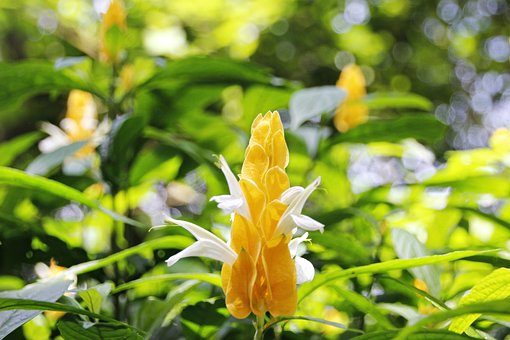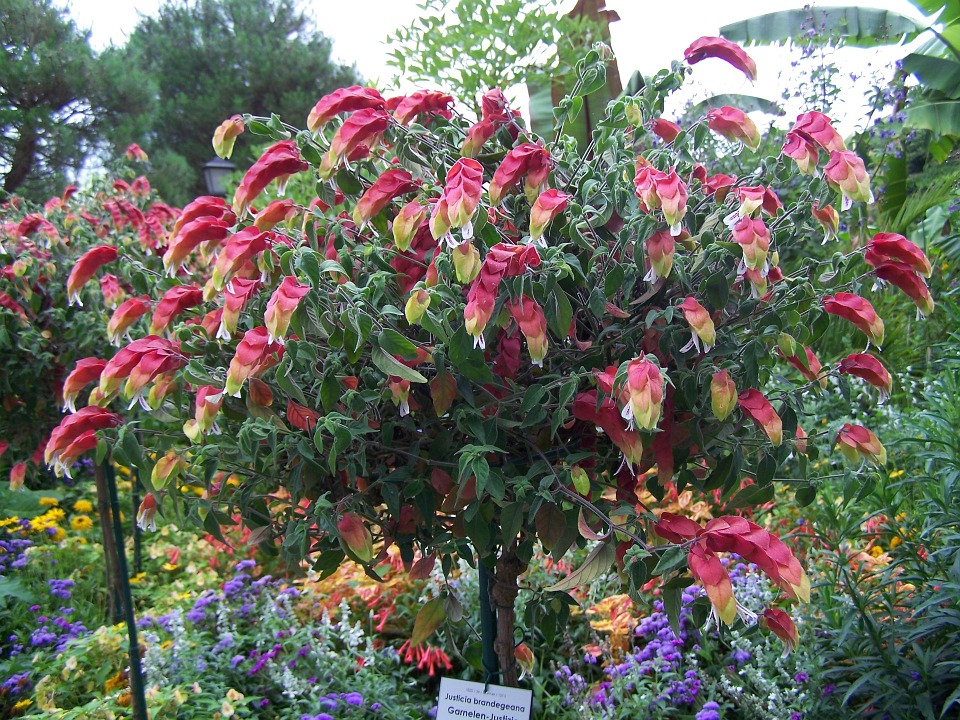Successfully Growing and Caring for the Shrimp Plant

The shrimp plant is a tropical shrub that is truly amazing, when first introduced to these plants many years ago I was totally blown away by the flowers this plant produces which is so unique because the flowers resemble a shrimp believe me the shrimp plant is a garden wonder that will work wonders for your garden and landscape areas.
These garden beauties can produce flower bloom by the masses year-round, the shrimp plant is native to Mexico and can be grown in zones 8-11.
This plant is so easy to grow and can reach a height of 3-4 ft, investing in a plant like this is worth it in my humble opinion. For more on the growth and the care of these beautiful shrubs that have gotten the attention of so many gardeners, as well as homeowners, take this journey with me into the fascinating world of the shrimp plant.
Planting Location
When installing the shrimp plant install in an area that gets full to partial sunlight.
Soil Type
The shrimp plant grows best in potting soil that is well-drained.
Watering Methods
Ensure at all times that the soil is evenly moist, however, do not overwater or saturate the soil because this can lead to root rot.
Fertilizing Methods
The use of a fertilizer that produces flower bloom is ideal, before fertilizing read and follow the manufacturer’s label for best results.
Garden insect pest of shrimp plants
Keep an eye out for this garden insect pest
- Scales
- MealyBugs
- Spider Mites
- Aphids
Scales
There are many species of scale insects. These garden pests cause plant injury by injecting their piercing-sucking mouthparts into the plant’s leaves and extracting the plant’s fluids or sap which can lead to yellowing and browning of the foliage.
Scales are tiny insects with bodies that resemble and armor, these garden insect pests remain in a fixed position or motionless but pay that no mine because the damage is being done. This feeding can also lead to sooty mold. Applying neem oil or insecticidal soap will bring these garden insect pests under control.
MealyBugs
Mealybugs are very common among garden insects pests and feed on a host of garden plants. Mealybugs can be easily identified by a white waxy mealy covering that looks somewhat like cotton. These bugs can cause the same damage as aphids, mites, and scales. The use of insecticidal soap will bring them under control.
Spider Mites
Spider mites are very tiny but can cause huge damage to our garden plants, to know if your shrimp plant has spider mites look for spider web along with your plant taking on a dusty appearance. What you can also do to further test your finding is to place a sheet of white paper under the plant’s leaves and gently shake or tap.
If it is spider mites you will see tiny specks or spots moving around on that sheet of paper and if the infestation is very server you will feel them crawling around on your hands. Spider mites also cause yellowing of the leaves followed by leaf drop, removing the infested leaves along with leaves that are dead and applying insecticidal soap or horticultural oil will bring this garden insect pest under control.
Aphids
Aphids are tiny pared shape insects that cause damage by sucking the plant’s fluids turning the leaves yellow followed by leaf drop. Aphids are among the easiest garden insect pests to eliminate. A strong spray of water from a garden hose will knock them off your shrimp plant eliminating them however this strong spray of water can also break the leaves.
The use of insecticidal soap will give good results or a homemade remedy that has proven to be effective is soap liquid and water. Add a tablespoon of soap liquid to a gallon of water shake well and apply it to a 32 oz spray bottle. When applying this mixture get both the top and the underside of the leaves. Adjust the head or the spray nozzle so that this solution can come out fine and misty getting full coverage.
Coarse droppings will be ineffective. This solution should be applied on a few of the lower leaves to see if it doesn’t have an adverse effect on your shrimp plant, wait for at least a day or 24 hours. If there is no adverse effect then go ahead and spray the entire plant. Wait for seven days and if there are still signs of aphids then repeat the application and follow as was directed.
Shrimp plant diseases
Watch out for these diseases

- Root Rot
- Nematodes
- Fungal Leaf Spot
Root Rot
Root rot occurs when your shrimp plant is getting too much water or the soil may have poor drainage. Signs of root rot include wilting of plant, yellowing, and browning of the leaves. Discontinue watering and allow the soil to dry out, adding compost to the soil will help with water drainage
Nematodes
Nematodes are tiny worm-like microscopic organisms that live in the soil, nematodes will attack the roots of your shrimp plant causing wilting, yellowing, and also stunted growth. Don’t plant your shrimp plant in the seem spot and treat nematode infestation with a nematicide.
Fungal Leaf Spot
This disease is encouraged by the leaves being repeatedly wet with long periods of warm weather. Signs show up as tiny brown to black spots, as this disease progress, the spots will enlargen forming blotches. Your shrimp plant may also experience leaf drop.
Give your shrimp plant the proper spacing of about 2-3 inches apart for air circulation and also avoid overhead irrigation. Water the plant from the soil level, clean up all fallen leaves keeping the plant bed clear and clean of debris.
Where to install your shrimp plant
Here are just a few ideas on where to install the shrimp plant.
1. These plants can be installed in a garden plant bed
2. Plant them alongside a garden walking pathway.
3. Install them in containers and place the containers on either side of your front door entrance.
4. Plant them alongside a fenced area.
5. What about alongside a wall?
6. Install them as a specimen plant.
7. Plant them near a pond area.
8. What about the poolside?
Container grown shrimp plant
When growing the shrimp plant in a container, the container should be large enough so that your plant can sit comfortably. The container should have drain holes to allow excess water to drain, the soil type should be well-drained potting soil.
Place the container in an area that gets full sunlight although your shrimp plant will survive in partial sunlight. The soil should be kept moist and not waterlogged, plant food or fertilizer which promotes flower bloom is ideal. Read and follow the manufactures label, keep an eye out for disease and garden insect pests and treat as was directed.
Pruning your shrimp plant
Pruning your shrimp plant will keep it growing vibrant and bushy with an increase in flower bloom. Give your shrimp plant a heavy pruning in early spring. Prune overgrown and dead stems along with faded and dead flowers also stem which may be heavily diseased or insect-infested.
The final word
The shrimp plant is truly an amazing plant as said earlier, the uniqueness of these flowers is just mind-blowing, so for a show stopper that can turn heads getting the attention of just about anyone I believe these plants deserve a chance in your garden taking it up a notch what do you think? The shrimp plant a garden wonder that will flavor your gardens and landscapes.
About the author
Norman loves being in the garden, both at home and for his job....
he is 'Natures Little helper' being outdoors, growing his vegetables and flowers from an early age.
Now having spent over 22 years in the profession he want to give some of his knowledge to others...
his vast array of hints and tips you will find scattered over this site will help you no end growing plants in your garden.

Hi Norman
Thank you for the review on the shrimp plant, a plant which I am totally unaware of. This is probably because I live in the UK and I don’t think it can survive our winters. It look an interesting compact specimen, with masses of beautiful long blooms. You have provide enough details on how to look after this plant. Can you tell me it’s Latin name, as this is easy way to find the shrub?
Thank you
Antonio
Hello,my good friend so happy to see you this is an amazing plant which can really flavor your gardens and landscapes. The Latin name for the shrimp-plant is Justicia brandegeana. Hope this helps and have a good day.
Thank you for your detailed review of the shrimp plant. I have plans to build my own house in the future. I will keep a wide open space in front of the house or in the backyard of the house so that I can plant varieties of plants. The flower of shrimp plant flower is really beautiful and amazing, I checked it over the internet. I put the shrimp plant in my bucket list. Definitely, I will consider shrimp plant when I will have my garden. Thanks for the nice article.
Hello Fahim so good to meet you and I am so happy that I could help. These plants are so amazing and can do wonders for you. Wishing you all the best of success.
The shrimp plant looks unique to beautify our garden. I saw there are red and yellow colors of shrimp plant. Are there any other colors as well? If I’m interested to get the seed to plant it, where can I get it? I’m already thinking about having it planted at one corner of our garden.
Hello, it is so nice to see you, shrimp plants are pretty neat don’t you think? these garden beauties can work wonders and comes in many colors. Try your local plant nursery or garden center for these garden beauties. Hope this helps and have a good day.
My yellow shrimp plant is full of blooms but something is eating the leaves! I’ve found one tiny green bug or spider. How do I treat this. Even new leaves have chewed off spots. Thanks in advance.
my plant looks like it is dying ( root bound) or too much water? help
my plant is very old